Your cart is empty
| Navigation:
Identify:
Solutions: |
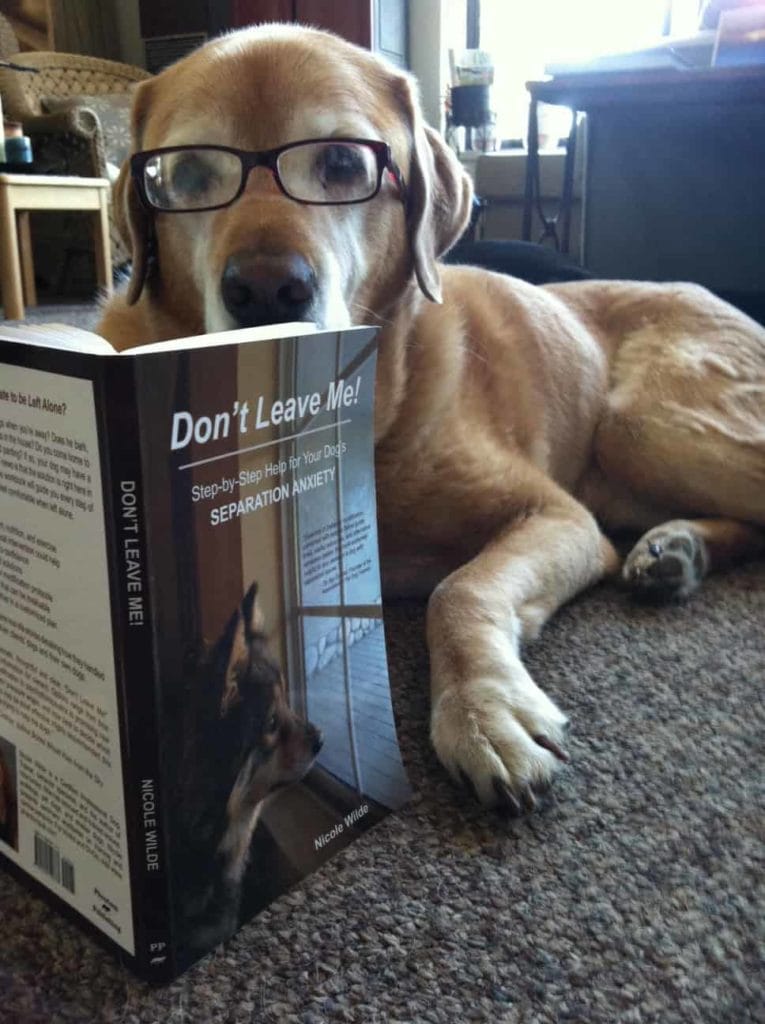 |
What is Separation Anxiety?
In Clinical Behavioral Medicine for Small Animals, Dr. Karen Overall defines dog separation anxiety as “A condition in which animals exhibit symptoms of anxiety or excessive distress when they are left alone.” You might recognize the symptoms as any of these:
- Drooling, panting, or salivating way more than usual
- Barking, whining, or howling
- Pacing, often in an obsessive pattern
- Attempting to escape from the crate or room
- Destroying items in the home
- Scratching at walls, doors, windows, or floors
- Chewing up household items
- Urinating and Defecating
- Coprophagia
Sounds like your pup, huh? Don’t worry. We’ve got you; keep reading 🙂
20 years ago, no one had ever heard of separation anxiety in dogs. Today, it is widely known as one of the most common problems we experience with our beloved canines. And sadly, one of the main reasons that end-of-the-rope owners feel forced to give a dog up for adoption. But as the intelligent beings who’ve brought dogs into our homes, it is our responsibility to fix it (and we can!).
Our mission? Put you in touch with the solution: understand how your dog is trying to communicate with you and how to permanently rewire unwanted behavior patterns.
What’s the Difference Between Separation Anxiety and Bad Behavior?
Bad behavior is your dog acting out before you leave, just so he can have your attention. Separation anxiety is a phobia: there’s actual fear behind the behavior.
How to know what’s what:
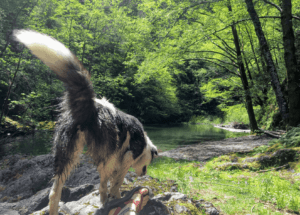 Dogs are really smart. They live in our entirely human worlds, and by necessity, have become so finely attuned to our schedules and patterns. So it’s really easy for our dogs to tell when we’re about to shut their world down, separate them from their pack, remove all sources of love. Humans call this leaving for work.
Dogs are really smart. They live in our entirely human worlds, and by necessity, have become so finely attuned to our schedules and patterns. So it’s really easy for our dogs to tell when we’re about to shut their world down, separate them from their pack, remove all sources of love. Humans call this leaving for work.
Knowing they’re about to be alone and dreading it, many dogs will do ANYTHING to get your attention. And that includes bad behavior. Even being reprimanded becomes a reward because they’ve got your attention.
In these cases, the canine behavior has a quality that we in the professional world call “naughtiness.” Just kidding. But you do know it when you see it; they won’t come when you call. Instead, they grab your shoe and run into the kitchen, maybe start digging in the yard.
There is no fear behind this behavior. That is the distinction. The remedy here is more training and careful discipline, and it is fairly easy to overcome.
But what if there is fear behind the misbehavior? Your dog might just have a full-blown case of separation anxiety. But that’s ok too because we’re about to pinpoint the problem.
Other Potential Problems to Rule Out:
Puppy Destruction
Puppies chew things up. Their teeth are coming in, and it’s so exciting and delicious to test them on your shoes! This behavior is almost always just age-related and not separation anxiety—nothing to worry about.
Bored?
Canines need stimulations like all mammals. If you’ve left them with nothing to do, they’ll find something to do, and you probably won’t like their choice nearly as much. If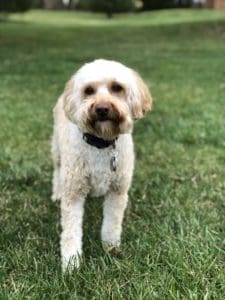
your dog doesn’t seem anxious, it’s probably just boredom/lack of exercise.
Excitement/Submission Urination
Dogs get really excited to greet us. Some get too excited and lose control of their bladders. Or maybe pee when you discipline them. To identify if this is just excitement/submissive urination, watch for submissive behavior: tucked tail between the legs, flattened ears and lowered head, hunching down low or displaying the belly. In all cases, this behavior is NOT anxiety-relate
Poor House Training
If your dog repeated urinates or defecates in the house but shows no other signs of anxiety, his symptoms probably indicate an unfinished house training education.
Scent Marking
This almost falls under the category of unfinished house training, but I thought I’d give its own to distinguish a dog that’s deliberately urinating because of the need to mark its territory. It’s a slightly different behavior problem, but once again, unlikely related to a fear of being left alone.
Why Do Dogs Develop Separation Anxiety?
Dogs are pack animals. In their wild settings––evolutionarily where they’ve spent most of their lives––they are never alone and always stimulated and engaged.

Now imagine that creature, living in your high-rise apartment and surrounded by none of those natural stimuli. (And in fact, immersed in only the confusing ones of honks and beeps and rings they can’t understand). Their perfectly immediately adapted behavior to this strange world is a lot for us to ask of them. So it’s up to us, their intelligent, loving guardians, to make that situation as calm and happy as possible.
- Notice: there’s a lot of anecdotal evidence to suggest that dogs adopted from a shelter are far more prone to separation anxiety than a puppy reared with the same family. It’s believed instability and/or the loss of a significant family member can cause this fear.
- Aging dogs can also develop separation anxiety as their senses weaken, and perceived stimuli decrease.
-
-
- Check out our great guide to managing hearing loss if this sounds like your pup.
-
-
So how can we remedy this? First, pay a ton of attention to any changes you make in your life––because your dog certainly is. Transitions, schedule changes, any shifts in your normal routine are some of the most common triggers for separation anxiety.
Common Triggers of Separation Anxiety:
- Change of Owner: Have you just brought a new pup home? From the shelter or breeder? A change in environment or family is a HUGE shift for a dog. Leaving everything they’ve known? It’s no wonder such a radical change can trigger separation anxiety.
- Change of Household: Moving houses is another common reason. Or perhaps they’ve started going to a boarding facility? Again, pay attention to any potential change in the environment.
- Change in Family Membership: Did someone new just join the family? A baby or perhaps an elderly relative? Suddenly there’s someone new, and they’re taking all the attention away from your dog!
- Change in Routine: The above are some common examples, but you know your household best. Has there been another change in schedule or structure, such as the loss of a family member or other pet that might cause this new anxiety?
- Boredom and a lack of exercise: Sometimes, it can simply be boredom. Dogs need stimulation and excitement just like we do. Imagine how you’d feel left in a house with nothing to do for 8 hours. You might be tempted to start some trouble too!
- Being left alone for the first time: If you’ve got a new dog and leave for the first time, they’re probably going to be confused and unhappy, display all the symptoms we’ve talked about. In this case, it’s important to nip this behavior in the bud before it develops into full-blown paranoia.
- Suffering a Traumatic Event: A singular traumatic event where your dog is shocked or really afraid can also be a cause. Can you think of anything? Perhaps an unmonitored new time at a shelter or boarding kennel? This can be the trigger if you notice a radical change in behavior.

An important note: Dog separation anxiety is often unknowingly supported by owners. When we make a big show of leaving or arriving, we surround the event with a ton of charged emotion. This encourages our dog to be concerned too (since we’re clearly so excited for some reason!!!!) and thus creates stress around the whole structure of departure/arrival.
Solutions: How Can I Treat Separation Anxiety in My Dog?

There are a lot of ways to begin working with your dog’s anxiety, ranging from easy solutions to more difficult work.
We’ll begin with the easy solutions––because who doesn’t love an easy solution––before moving into the more intensive ones.
5 Immediate Solutions:
Here’s an easy tip straight from our friend Cesar Milan: Stay Calm and Assertive
When it’s time to leave the house, don’t surround the event with a ton of emotion. Weeping, kissing, saying goodbye, excessive cuddles are all great things in their time and place, but not when you depart. Don’t exude guilt or sadness. Instead, project the calm-assertive energy of an owner who is completely in control of the situation and has a plan of action. This reassures your dog that everything is happening as it should be, and there is no reason to fear. You set the vibe, they listen.
Get ’em some exercise before work!
 This is a great one for all parties, actually. I won’t cite any studies for the importance of exercise (because at this point, we don’t need science to confirm such an integral part of mammalian happiness), but a tired dog is much likelier to avoid trouble than an energetic one. End sessions 15-20 minutes before you leave so they have time to wind down. This training creates a pattern of reward/happiness around your departure because they can recognize they get to go play before! And perhaps even that we are paying enough attention to consider them as part of our day.
This is a great one for all parties, actually. I won’t cite any studies for the importance of exercise (because at this point, we don’t need science to confirm such an integral part of mammalian happiness), but a tired dog is much likelier to avoid trouble than an energetic one. End sessions 15-20 minutes before you leave so they have time to wind down. This training creates a pattern of reward/happiness around your departure because they can recognize they get to go play before! And perhaps even that we are paying enough attention to consider them as part of our day.
Create a space of fun and safety:
- Dedicate a room, enclosed yard spot, or perhaps a crate to be HIS space when you’re gone. There is safety in rituals and routines for dogs; they LOVE consistency.
-
- Pro Tip: A laundry room is usually almost already dog-proofed and easy to convert.
-
- Make sure they have ample access to food and water (and ideally, a place to relieve themselves).
- Leave some of your clothing in the space to remind him of your presence. Our friends at Adaptil also make great calming pheromones for dogs left alone.
- Stimulate his mind! There are tons of great puzzling toys out there intended for dogs at home. We love a well-stuffed Kong.
- Shameless plug because how could I not: leave Through a Dog’s Ear music playing. It’s clinically demonstrated to relieve separation anxiety and is a beautifully calming part of your exit routine. When you’re home together, I suggest starting the music–it works on humans too–then peacefully make your departure after your dog has laid down for a snooze.
Want more on crate training? Here’s our favorite YouTube on it:
[embedyt] https://www.youtube.com/watch?v=oHJZ3rS1_3U[/embedyt]
Explore Creative Solutions:

Do you have a friendly elderly neighbor who’s home all day and could come let your pup out for a pee break? Perhaps a neighbor dog that gets along with yours could be kept in the same space. A friend who’s having the same problem could perhaps fix yours! Two dogs, one stone 😉 You’ll have to get creative here because it’s so situationally dependent, but your pup will thank you. They’re pack creatures and always have more fun with another packmate around. And, of course, you can always pay to board them/find a doggie daycare.
Herbal and Homeopathic Medicine:
Drugs only ever mask the problem and do not treat the solution. Plus, who wants to be paying for gallons of CBD dog treats for the rest of their life? Not me. That being said, many do find temporary relief with a lot of these options, and in combination with a calm training protocol, they can have a positive effect in temporarily assisting tranquility. If you think this would be a helpful part of your regimen, we recommend our friends over at Honest Paws.
Conditioning: How to Re-Wire Old Patterns

I’m sure you’ve noticed already, but all of these options are about creating new patterns. Conditioning is the technical term for this work, and there are varying degrees of difficulty and strategy that may be needed, depending on the degree of canine separation anxiety. For your ease, I’ll start with the simplest before moving into our two-day intensive program.
Establish a word or action
Create a pattern that becomes their new routine and tells your dog you’ll be back. When you authoritatively create routines, your pup takes on the same confidence. He’s ok being left alone because he knows you’ll come back and trusts your leadership.
-
-
- Choosing a word: Create a keyword or phrase that your pup associates with your calm, unemotional departure. Remember: dogs don’t understand language, but they do understand your energy communicated through words. So make sure your phrase conveys the tone you want. For example, I would probably say, “Goodbye, Yara. I’ll be home after work.”
-
Mix Up Your Patterns
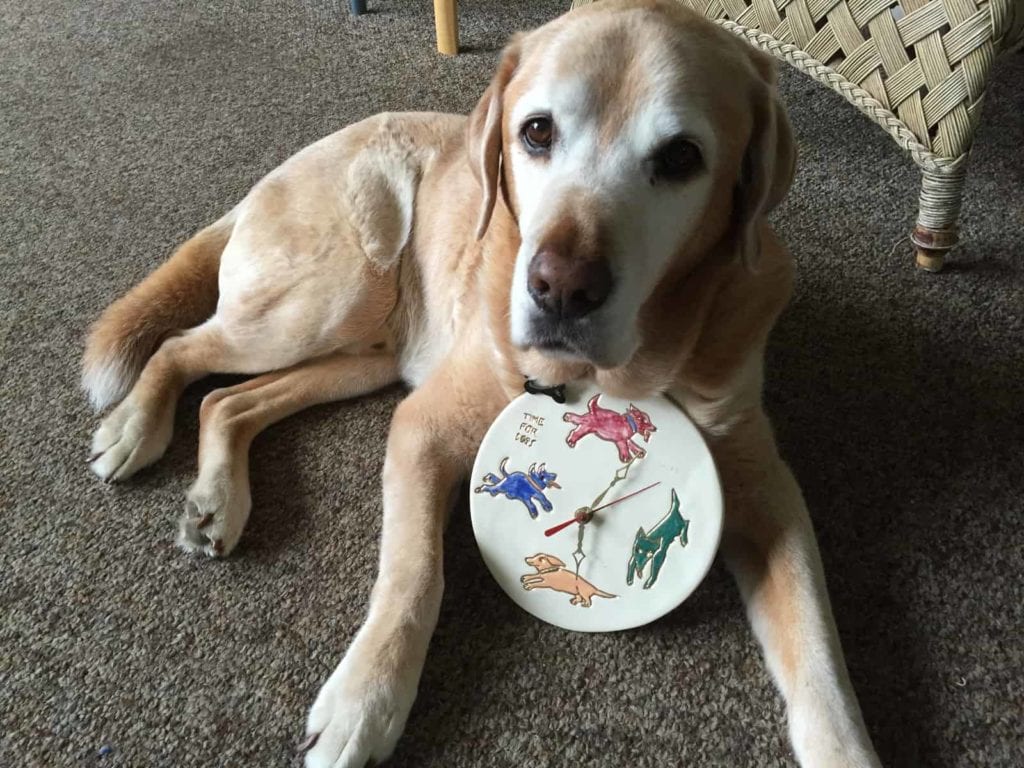
Dogs are smart. They are constantly studying all of our behaviors, actions, and routines. For example, if you always put on your shoes right before you leave the house for the day, the shoes tell your pup that you are leaving. Likewise, if picking up your car keys is always a precursor to leaving, your dog may start to panic just at the sight of your keys.
Start mixing up your routine. Pick up your keys and start cooking dinner. Put on your shoes and walk to your computer. Do the opposite and put on your shoes, open the door, but don’t leave. The idea is to keep your pup guessing so that he starts to unscramble the patterns you’ve already set in place. This stops his anxiety from building to a fever pitch when he sees the first cue in the departure sequence. Humans are creatures of habit, too, so it can be difficult, but think of it as a fun chance to try some variance in your life. Certified Professional Dog Trainer and behavior specialist Nicole Wilde calls it “The Faux Go.” In her book, Don’t Leave Me! she says, “You’ll be teaching your dog that the door opening and you walking out is nothing to worry about.”
If you are training a new puppy or dog that hasn’t been left before, start practicing this method with very short departures initially. Think stepping out to get groceries. If all goes well, start increasing your time, little by little. A human minute may equal a dog hour, so take puppy steps when increasing your time away incrementally.
- Training Tip: Want a protocol that walks you through it? Separation Anxiety training protocol by famed dog trainer Victoria Stilwell can be found here.
Try House Training Your Dog
Spend time training around the house. Show your dog how to behave in simple daily routines. Little increments and minutes, anything, can be an opportunity for training. For example, instead of just going for a walk, ask him to sit at stop-walks, lay down when you’re having a coffee outside at Starbucks, wait for your OK to greet new people and dogs. Train your dog to sit and wait to be greeted by guests, move aside when you go to the refrigerator, and go to the bathroom on cue. Establishing these routines––and of course, rewarding good behavior––helps create new patterns for house behavior that gives them strong guidelines, discipline, and confidence. Dogs want to be good and please us. We just have to show them how.
Ok, have you tried it all?? Then it’s time to dive into our reconditioning program:
9 Steps, 1 weekend: Reconditioning Protocol
1. Dedicate two, or even three days in severe cases, to having some time you can spend uninterrupted with your dog. (I know, I know, you’re busy, and who has two days for a dog?? You do because the reward is a lovely balanced dog that fills your house with so much love. Best investment ever).
2. Prepare their den: this looks like a crate, or outdoor pen, or a dog-proofed room like the laundry room example. 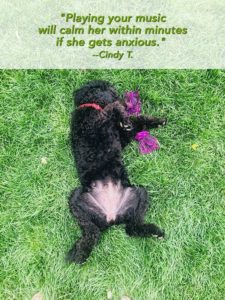
3. Give your pup a chance to take care of any bodily functions outside, and then reenter the house together for 30 minutes of calm and close supervision. Introduce him to his beautiful new den with a happy vocal tone, treats, soft Through a Dog’s Ear playing, a stuffed KONG toy, good scents, and your clothing in it. Guide him inside and stay in the room together.
4. Initially, stay close and attentive, but not lasered on all his moves. Read a book, check email. Ignore any whining or fussiness. When he finally falls quiet, go over and calmly say hello, give affection. Then go back to your activity. Repeat many times: reward his behavior when he’s silent and not begging for attention. You’re teaching him that whining is not a rewarded behavior and that you leave and return according to your own timeframe. He begins to understand: if you leave, you will return. During this time, it should only be you two in the house. He needs to learn that it’s ok to be alone.
5. Now, begin to step away, gradually increasing the distance between you. Leave the room and come back when he’s quiet. Go outside and return again under the same conditions (if you can fit this around your actual lived schedule and doing things, extra credit to you!). Eventually, you can wander around the house without upsetting your dog. He’s not finely tuned to your moves because he’s learning it’s random and not based on any behavior pattern of his. Therefore, he can’t make you react/come when he’s lonely. Every reentrance, greet him calmly and with love. Reward and tell ’em how good he is.

6. After an hour or so, take a break. Go outside for a pee and playtime. Chase each other around and have some relaxed, untrained fun. Then go back inside and resume den training, following steps 4 and 5. This step is important because it clarifies the difference between training and play. He needs to know the difference between unstructured free time and disciplined work.
7. Day two: Continue to repeat steps 4 and 5 from the first day, but a little faster and with more distance this time. Follow your own intuition in determining length. Start to live your life, do chores around the house, but be sure to pop in frequently when he’s quiet and reward the good behavior. Dogs are smart and will very quickly learn they only get rewarded when they’re quiet and calm.
8. Keep increasing your distance. On day three or four, if he’s taking to the training well, try and step outside of the house for short amounts of time initially. Return after 5 minutes and greet your dog if he is quiet. You may lose a little momentum here as they are going to be more excited about your reentrance. But wait for quiet, then reward. It’s usually the first 20 minutes of separation that are most difficult. If it’s going well, continue varying times and distances. Remember to mix up the times, so he doesn’t start anticipating your return. And, of course, plenty of outside breaks: young puppies will need every hour, older dogs can go for 3-4 hours, but try for more breaks during this training.
9. How’s it going? Are you stuck on some of these steps? If it’s not taking, you may have to spend longer amounts of time in each stage. Every dog is different, and your own intuition will be the best guide for determining length in each stage. If you’re making absolutely no progress and your dog is freaking out, you just might need the personal help of a trained professional. But if it is going well, begin to live your life more normally, checking in and continuing to reward as often as possible with a modern schedule. Your dog, your family, and your clean rugs will thank you for this hard work in the long run. Cheers to you two! You just graduated from the separation anxiety academy!
Has your dog experienced separation anxiety? What have you found to help? Share your experiences in a comment below so I can improve this guide. Thanks for reading and sharing!

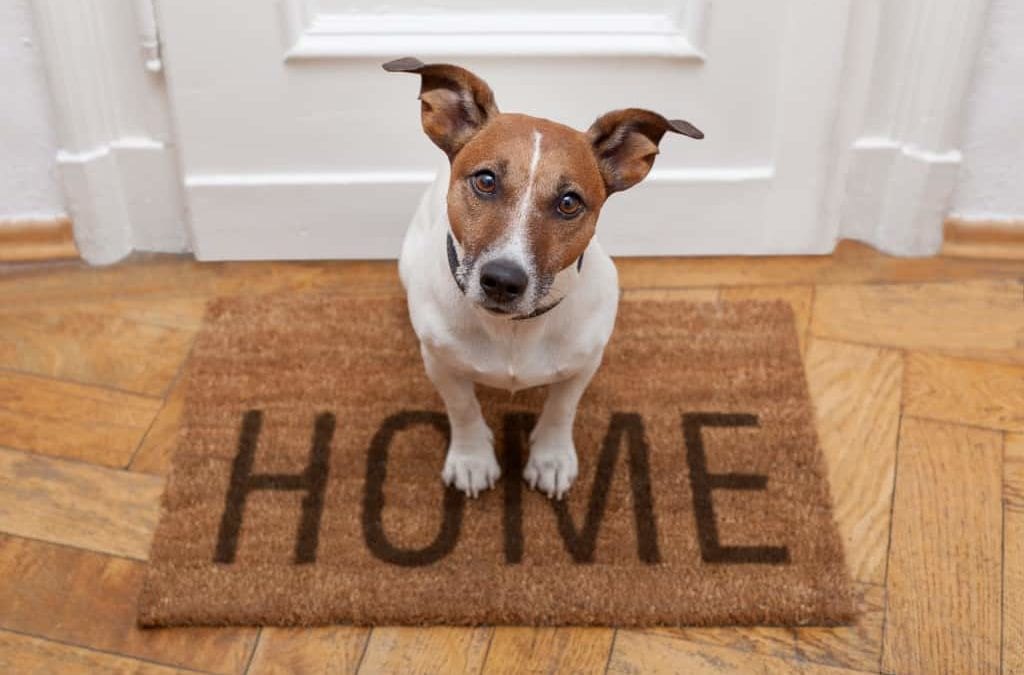



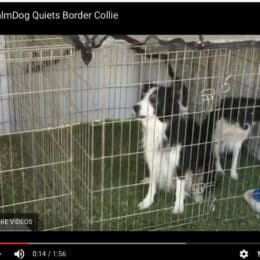
My dog has been crate trained. When I try to leave hin out, he pees on the floor or gets into stuff and tears it up.
Deborah – Many dogs benefit from staying in a crate when their people are out. Good for you for crate training him. I forgot to mention in my post that all of these tips can also apply to dogs who stay in their crates when they are home alone.
I have rescued many street dogs in Mexico and found them good homes after returning them to good health.
My two dogs are the ones I kept for myself.
Anything I can learn about helping dogs to recover physically and emotionally from a traumatic past is a big help.
I am retired, and this is my heart work for my life now.
Cherrie – Keep up the great work. Those dogs are fortunate you have been there to help.
My Dogue de Bordeaux suffers separation anxiety. He broke the door off his steel crate (hurt himself in the process). Then he would do battle at the door to go with me. I was at my wits end when a vet told me about Through a Dog’s Ear. I trained him by creating a calm routine associated with my leaving. I put on the music at first, letting it lull him. Then I would put on the music, pick up my keys/purse and stand by the door (no eye contact, no speaking) until he was calm. Then not leave. The final stage was to put on the music, pick up my things, stand by the door and leave when he was calm (sometimes up to 10 minutes). This took about a month of progressive training. Now I put on the music, he goes to his bed, and doesn’t even look up as I leave. The bed was his idea, not mine. It has been 5 years of peace since I first found your products. I’m SO grateful.
Nicole – What a fabulous testimonial and what wonderful work you did with him. I’m so glad to hear how much Through a Dog’s Ear helped his separation anxiety and has continued to help for five years now. Thanks so much for sharing!
Appreciate all tips and fyi, your calming classical piano is awesome. Forget my pooch! It so relaxed me after a tough day at nursing home, I fell asleep. Bingo is muy little yellow lab and she is doing better all the time. She’s a 6 year old female rescue dog ( who had been used to make puppies, puppies, puppies, I love her dearly. No more puppies. Just me and Bingo . Thank you for being a good part of our lives. :–)
Barbara – So glad that you and Bingo are enjoying Through a Dog’s Ear so much. Yep, research shows that the same sounds that calm humans also calm dogs. Continue to enjoy it together, and no need to feel guilty when you play Through a Dog’s Ear just for you.
My dog does not have seperation anxiety, but then again from the moment I got her I put in place everything that is recommended, desensitised her to my leaving, doing short trips at first, making sure she was tired, had things to keep her occupied, etc.
I always take her for a long walk before I leave, I always leave your music on, and I always leave food filled toys to keep her occupied. As my dog is not a barker and loves to watch the world go by, I also leave her with a view to the outside world, something I would not do if the dog was going to bark at people or dogs going past, or become distressed by it. When I first got her I also used a DAP plug in.
As for through a dogs ear, well it is true that my dog is calmed by it, but I think I love it more as I have never found anything to clam me as much as it does!
Thanks for your wonderful feedback Belinda. So glad to hear how helpful Through a Dog’s Ear has been for both the 4- and 2-leggeds in your home!
Our female corgi, Prema, is a year and 4 months. She came to us at 4 months with some anxiety, esp. around noise and large objects. She is getting less startled day by day. What is an issue is that when we leave the house, she has to go outside in the yard. We have a dog igloo and she goes into that to the far back corner and from what I can determine doesn’t come out until we get home, not even to go to the bathroom. I try not to leave her for long periods of time. She is crate trained and sleeps in the crate at night. I would like for her to feel more comfortable outside when we are away from the house. If we are home, she will come and go outside with no hesitation. She knows when we are leaving and are going to put her out.
Elizabeth – Do you know about our Separation Anxiety training program? It’s created for the iCalmDog ~ The Portable Solution to Canine Anxiety. It comes with training instructions by Victoria Stilwell. The iCalmDog would be perfect for Prema’s dog igloo. It would keep her company when you are gone, and following Victoria’s training protocol would help her build confidence. Here’s the link to Separation Anxiety:
https://icalmpet.com/product/separation-anxiety-sound-card-for-icalmdog/
Let me know if you have any questions.
Our new baby is dong really well learning commands, but when leaving her stress level is out of control. She’s 4 months old. We really want to try your music to see if it can help her relax. Thanks!
Any tips for a recently developed noise phobia? Your player doesn’t work in UK. I leave your CD on but it must finish quite soon. Am trying to buy a mobile CD player with a replay function. He’s never left more than about 3 hours & I also leave on calming essential oils for dogs in a plug-in diffuser. Noise is unpredictable – I live in area where they shoot pheasants and, though a gun dog breed (lab), even one shot can now make him shake and pant. He takes cover in his felt igloo (his safe spot – almost totally enclosed). Any other ideas for things I can do?
iCalmDog actually does play in the UK and auto-repeats After the four hours of play. If you need it charging while playing it will play forever. It’s helped thousands of dogs, some in the UK, even with the most severe separation anxiety. It’s highly recommended by vets and trainers and comes with a 60 day money-back guarantee.
I absolutely LOVE the iCalm dog–both for my two dogs as well as for me! In fact, after hearing me play it so regularly, my son-in-law asked about getting one for his office–and he’s NOT a vet! One of my dogs is now 15+ years and experiencing some dementia–in addition to other physical issues. He has recently become quite restless at night, waking up and pacing about the house–seeming quite disoriented. I discovered that, if I leave the iCalm on, playing the music for elderly canines, both of us are able to have a good night’s sleep! Thank you, Lisa! And thank all those who have commented and offered so many great tips!
Ah, that’s music to my ears Fran.
Lisa,
Thank you for the informative article! We adopted a previously neglected 5 year old Chinese Crested about 9 months ago. He suffered from extreme separation anxiety to the point where he would commonly harm himself in attempts to get out the door and find out while we were away. The only things that seemed to ultimately help were 1) crate training and 2) a Thundershirt.
I think the crate training provides a safe place for him to be throughout the day. I watched him on a camera while we were gone and observed that he would race around the house all day pacing back and forth waiting for us to come home. I think being in a big empty house by himself was intimidating and the crate helped alleviate that issue.
The Thundershirt is designed for thunderstorms but has also been effective for separation anxiety. Even when we do have him in the crate now, if for one reason we forget to put his Thundershirt on before we leave for the day we can hear him barking when we come home and he seems more stressed out on the days that we don’t put the shirt on him.
Also, music also helps calm him and I would recommend that to be added in conjunction with any other techniques.
Hi Ashley – Have you tried iCalmPet’s clinically tested music? It’s helped hundreds of thousands of dogs with anxiety issues, including separation anxiety. Listening samples can be found here https://icalmpet.com/listening-samples/
My 9 month old boxer puppy has separation anxiety. He tore up my kitchen floor a few weeks ago then required surgery. He does fine in the crate when I am home with him but he barks all day when I leave – starting as soon as the door closes. I just purchased this program for him along with the adaptil diffuser. I sure hope this helps him. I worry about him the whole time I am gone!!!! Can’t wait for it to arrive so I can begin training him to be calm 🙂
Kathy – Let us know how your puppy responds. It’s helpful to follow Victoria Stilwell’s training instructions.
Thank you for the tips. I will be definitely be giving the sample music a try.
These tips are really helpful and i wanted to say thanks to you for this blog post.
Hi Lisa, Thank you for the informative article! I a, going to try this out and see if it works on my dog. Great blog post!
I appreciate the information provided in this blog about the factors which should be taken into consideration to deal with the separation anxiety in the dogs. Separation anxiety is a kind of mental disorder and very common in dogs and a dog owner should be aware of basic tricks to deal with such situations and to keep the dogs physically and mentally healthy. One of the best ways to do so is to play music which makes the environment more livable to a lonely dog. Besides, regular physical exercise is also essential to keep the dogs healthy.